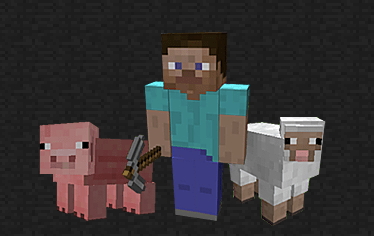If you read one book this year about green pixelated monsters that were originally supposed to be malformed pigs, make it Minecraft by Daniel Goldberg and Linus Larsson. This slim volume by two Swedish tech journalists tracks the creation of Minecraft from the bedroom of a quiet, driven programmer named Markus Persson to the ballroom of the Mandalay Bay hotel in Las Vegas where thousands of dedicated fans rushed the stage to meet their hero in a fit of pure, reckless abandon. It’s the story of a nerd made good and of how creativity and hard work meet to make something great. It is also a surprisingly human story about a boy who suffered and the man born of that sometimes sad crucible known as childhood.
Books about programmers are traditionally a slog. The loneliness of the long-distance coder makes for some dry copy and except for a few rare exceptions – the The Cuckoo’s Egg and Rebel Code being two – because the story of a programmer is far less interesting than the program itself.
Luckily Goldberg and Larsson know how to tell a story. While not structurally perfect, the book’s cornerstone are very detailed interviews with Persson, his wife Elin, and the entire Mojang team as well as real love for the game and the story of its making.
The tale begins in 1979 when Persson AKA Notch is born in Stockholm and spent seven years in Edsbyn where he was an avid LEGO builder and, once his family acquired a Commodore 128, programmer. Young Notch spent his childhood coding, first on his father’s lap and then alone, in his room, falling into a fugue state that is familiar to many tech obsessives. He would rarely come up for air and his childhood friends were the cursor and tape storage drive. His mother worried.
His sister, Anna, meanwhile, fell into drinking and drugs and rebelled in her own way. An armchair psychologist would see a connection in her predicament to their father, Birger’s, own drug abuse. An armchair psychologist would also say that Notch’s escape into coding was the flip-side of his sister’s coin, a way of removing himself from the hard, strange world outside. Obsessive coding, like a drug, is pleasure with a price.
The tale continues apace with stops at dead end jobs and angry bosses. Notch was a gifted programmer but clearly there was something in him that rebelled against idiocy. Stockholm in the 2000s was a hotbed of game design and Notch was ensconced firmly at the bottom, wasting his time writing janky Flash games for Midasplayer (aka King.com, creators of, obviously, Candy Crush Saga) and then fiddling with a company called Jalbum. But notch was a child of the Internet and he knew he wanted more. After playing Dwarf Fortress, the baffling text-based adventure game that became a surprise hit, Notch had an idea: he wanted to create an open world that you could completely control. There was no difference between the player and the scenery, no beautifully-rendered cutscenes. Instead, players were presented with the world and, like blocky Adams and Eves, they were given dominion.
Fans of the game will understand the pull Notch’s title had on the human player. It is M&Ms for the brain, an experience of creation and survival that brushes our hedonistic buttons like a lover. The gameplay was amazingly simple yet could produce environments as complex as the world itself. In this world people built model Taj Mahals, model starships, and model Earths. They could turn off the monsters – the aforementioned pig-monster, called the Creeper, is one scary mofo – and they could simply create. He released a beta in 2009 and offered it for half price. It sold thousands. He finished the game and sold it for $26. He sold hundreds of thousands.
In the end Notch made millions on Minecraft. He met his gamer heroes, built a true indie games company, and saw his sister Anna come out of the dark maw of addiction and back into his life. He married his pixie-sized girlfriend, became a force to be reckoned with online, and now lives comfortably in a world where he was once so uncomfortable. He lost his father in 2012 to drink and depression but the boy who once typed BASIC in the dark was now a man whose voice was heard around the world. He wrote about it: “When I said I wanted to quit my day job and work on my own games, he was the only person who told me they supported my decision. When I made Minecraft, he was incredibly proud. He saw me win awards, and he saw the fans embrace the games, and he saw me start my own company.” Then he said goodbye.
This book is about a figure familiar to many of us – ourselves – in that we, as lovers of technology often find it hard to see the patterns in the madness of the real world. It takes a little time to discern the connections but they are there and Notch, to his credit, found them just in time. Minecraft is a beautifully human story that is translated well by writer Jennifer Hawkins. It’s well worth a read and offers, at the very least, inspiration, and at the very most, hope.
